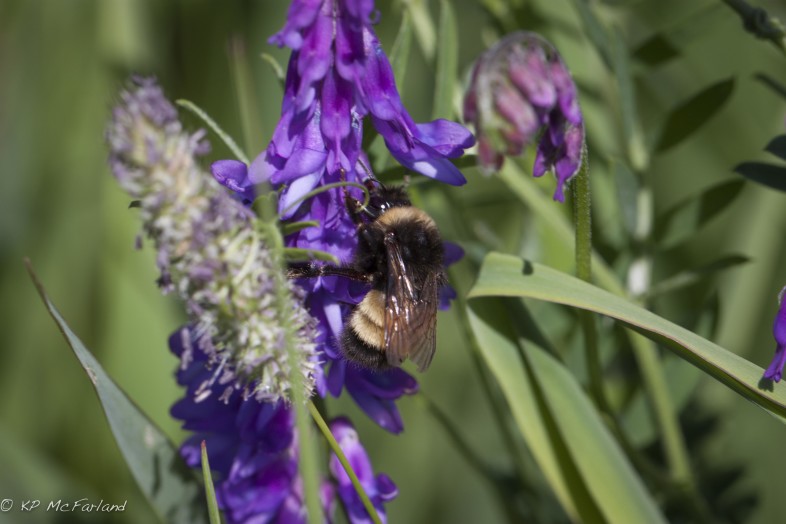
Vermont’s new Wildlife Action Plan lays the framework for conservation efforts necessary to restore populations of the threatened Yellow-banded Bumble Bee (Bombus terricola) and other species of conservation concern. / © K.P. McFarland
MONTPELIER, Vt. – The Vermont Fish & Wildlife Department has released a draft Wildlife Action Plan that lays out the state’s strategic vision for conserving species during the next ten years. The plan assesses the health of Vermont’s wildlife and wild lands, identifies the problems they face, and outlines the actions needed to conserve them for the long term. Work by the Vermont Center for Ecostudies, such as the Vermont Bumble Bee Atlas, a project of the Vermont Atlas of Life, was instrumental in helping with this plan.
The plan’s goal is to keep common species common while promoting additional conservation actions for species on the brink, to prevent them from slipping towards threatened or endangered status.
“This Wildlife Action Plan provides strategies to conserve the diversity of species that Vermonters cherish,” said Vermont Fish & Wildlife Commissioner Louis Porter. “To succeed in conserving wildlife for future generations, this challenge must be shared among government agencies, our nonprofit partners, landowners, businesses, and taken up by all Vermonters.”
This draft of the Wildlife Action Plan updates a previous version of the plan that the department and its partners have operated under for the past ten years. The plan continues to focus on habitat conservation as the most effective and efficient strategy for protecting wildlife, in addition to boosting Vermont’s economy and quality of life. It also emphasizes collaboration and partnership with agencies, municipalities, and conservation organizations.
Newer challenges to wildlife conservation outlined in the Action Plan include a changing and unpredictable climate, emerging infectious diseases such as white-nose syndrome in bats, and additional threats to pollinators like bees and butterflies.
“Vermonters care deeply about wildlife and our natural landscapes,” said Commissioner Porter. “Whether we are working to maintain healthy populations of common species such as moose or trying to recover lake sturgeon and other species in need, we call on the citizens of our state to join in this important effort.”
The draft Wildlife Action Plan is now available for public viewing at www.vtfishandwildlife.com. The Vermont Fish & Wildlife Department is seeking public comments on the plan until November 8, 2015.
